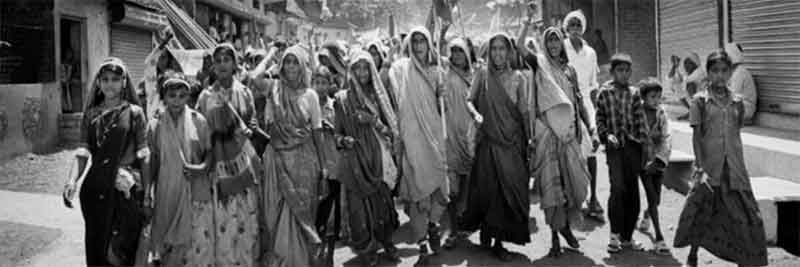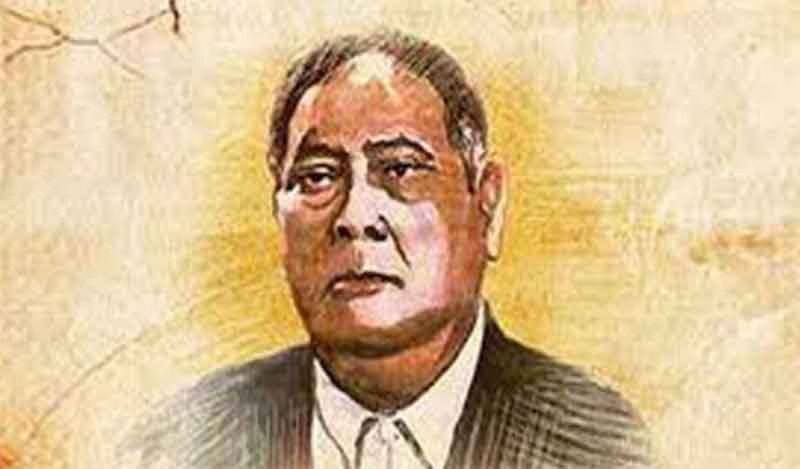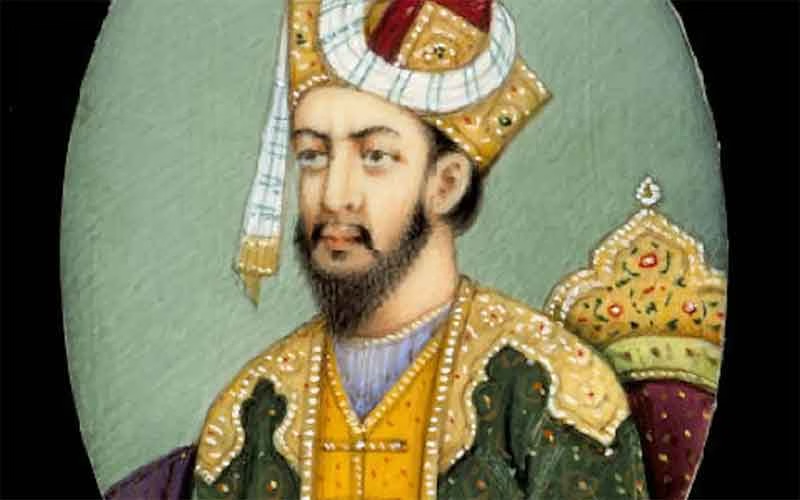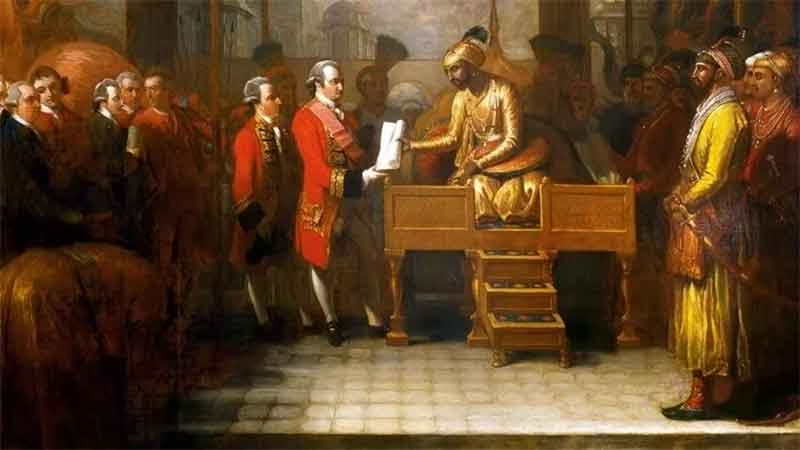
Introduction
Subaltern Historiography as we know came up as a branch of study with E.P. Thomson in the 1960s writing about the British labour movement and its significance. After that there was a flurry of such literature which highlighted the not so accentuated section of the society. The currents spread to other parts as well and in India started with Ranjit Guha who in the late 1970s and early 1980s came out with this Subaltern Studies series. For all the criticism of European influence on traditional historiography showered by Subalterns it was an oxymoron that they too initiated this “history from below” with the stimulus coming from Europe.
However, we shall look at the content of their historiography. The main argument made by the Subalterns was that there had been an elitist bias or rather the entire history-writing process had been dictated by the elite leadership. It was argued that Indian national historiography had seen two strands diametrically opposed and yet complementary to each other. Colonial historiography was concerned with the institutions of the colonial masters and how Indian collaboration with them made the native elite gradually competent enough to take over that very structure which was created by the colonial masters. They discredit the native elites stating the lack of any ideals or altruism in them and highlighting their want for a share in the power and wealth with colonial rulers.
The other historiography is the nationalist historiography which is also following a similar path of defining the entire national movement in terms of a stimulus and response of the elite who were driven by lofty ideals and showed altruism by thinking of the entire populace and fought for freedom on their behalf. They criticise the colonial framework and colonial rulers for strangulating the natural aspirations. Both these strands do not present to us the full picture of the national movement since both these strands do not take into consideration the contributions made on their own sans the elite leadership. This would include the peasants, the labour class, the women as well as the other voices whose contributions have not been taken into consideration at all like the slaves and the concubines and prostitutes. These were the voices which needed to be presented and heard so that the approach of looking at the national movement changes from elite leadership and its stimulus to that of various groups with their firm response shaping the elite leadership’s response to them and accommodating them in the front against the British.
The Rise of The Subaltern Historiography
These histories have been the central foci of the twelve volumes of Subaltern Studies with various historians as well as people from other disciplines contributing to them through their expertise in certain areas. We see how the peasants were the most consistent group to have opposed the British and they did so largely out of the colonial framework most of the times on their own and at others they directing the elite response and not the other way round. David Hardiman through his research of the Gujarat peasants during the later half of 1920s has shown us this much. For how the elite leadership was made from the responses of these classes can best be seen in Shahid Amin’s study of Gandhi’s rise as a millenarian leader. Gyanendra Pandey has infact traced the entire rise of Congress in U.P. with how the party made efforts for the more and more assimilation of peasant demands connecting with the kisan sabhas for the purpose. While in Bengal and also certain areas North India, the Congress was not able to severe its link with the zamindar class, it was on their very own that the peasants fought on two fronts both against the British as well as the zamindars. The 1930s saw the intensification of peasant movements as well as groups which were much more confrontationalist than the earlier times and they were quite vocal about their demands and an agrarian program which shall be the base of any government.
Since they formed a sizeable portion their demands were necessary to be accommodated and with the Government of India act of 1935 and the provincial elections about to take place, agrarian program was adopted as the plank upon which parties were basing their election manifesto. The Congress under the leadership of Jawaharlal Nehru, himself quite sympathetic to the peasants and an active part of the kisan sabhas since their formation, promised radical reforms to the peasants after the party was elected. The British attitude also changed likewise who went from being at one time the patrons(mai-baap) of these peasants to being the most feared oppressors of them. However, the Congress failure to implement these demands once in office led to the regional parties alongside the Muslim League to gain a foothold in the provinces. Even the Pakistan slogan was able to seep in once the radical agrarian program was adopted by the Muslim League. The 1940s saw the peasants struggle reaching its peak with the Tebhaga rebellions. The peasants thus, played a crucial role in the nationalist struggle and the national struggle too tried to accommodate them in its extant.
What has been suggested by Partha Chatterjee in the section on agrarian relation and communalism in Bengal is indeed true of other regions as well, the reason being that the vast majority of the cultivating peasants were Muslims whereas the zamindar or the jotedar class was mostly Hindu. The Congress not wanting to eliminate the zamindars as a reliable group did not openly support the peasants, the provincial legislatures even abstaining to vote in the matter when the two groups came to lock horns.
Mobilization, by this interpretation, was another name for popular consent, for hegemony, for an overwhelming vote of the disenfranchised against an autocracy which had reduced them to second-class citizens in their own land-a vote for self-determination.There is an element of poetic justice in this rhetoric. For the valorization of enthusiasm is nationalism’s answer to the emphasis on collaboration in colonialist writings on South Asian politics. It explodes the ma-baap myth of a filial attachment on the part of the great majority of Indians to their rulers. To emphasize this point Ranjit Guha has used the example of the Swadeshi movement in Bengal where he finds it interesting that a large number of priests had participated as well as there was a greater emphasis on highlighting such participation.
The section on slaves as well as concubines has been highlighted by Indrani Chaterjee who identified two factors which had withheld a proper and serious study of these areas which are as follows- (a) the assumption that to study slavery is to study a social dyad, master-slave, rather than a complex interweaving of different aspects of society and politics as they underwent translation and (b) that the slave was a human commodity, transported across vast distances, and slave-labour was coercively exacted without a wage. This led to the lacunae of falling into the trap set up by colonial historians of knitting together these sections and presenting them as being better off since they were part of a “family”. Indrani Chaterjee states that- “The prior separation of monogamous wives from slave-concubines in the patriarchal family influenced historians to represent the female slave specifically as ‘outside’ the lineage and household, and slavery in general as the embodiment of anti-kinship, of non-belonging, of permanent alienation, while the function of constituting the legitimate lineage was preserved to wives.” Now this can be best seen in the representation of Wazeer Khanum as a “partner” of Maston Black in Shamsur Rahman Faruqui’s historical novel “Kai Chand The Sar-i Asmaan”.
Women had infact been long kept out of the discourse and had been “patronized” both by the imperialists as well as nationalist leaders who made women a battling ground claiming women to themselves but not understanding their problems and not giving enough space for their voice to be heard. Sarladebi Chaudharani has infact left the ranks of Congress accusing that Gandhi is too happy to see the women as mere law breakers and not as law-makers. Subaltern Studies have made a significant contributions in this field since they have brought to the fore the gender issues and raised voices of those till now unheard. Among the most far-reaching as well as significant contributions of Subaltern Historiography, women issues might count as the topmost.
About the Labour movement, there was an ambiguity among the nationalist leadership from the start. We find labour strikes aplenty in the 1920s and with the Jamshedpur strike when the labourers thought that Subhash Chandra Bose’s advice would be inimical to their interest they clearly resented his presence and carried on the movement on their own. Upon this aspect there has been much literature in the Subaltern Studies. The aspect has been highlighted by Ajit K. Choudhary in his discussion “In Search of a Subaltern Lenin.”In Sumit Sarkar’s words there has been a renewal of labour history has begun after years of neglect and marginalisation,though with much less fanfare and attention internationally or even within the country. It has been accompanied by intense debates, auto-critiques, the exploration of new themes, dimensions, methods. Raj Chandavarkar’s two substantial volumes on the Bombay (Mumbai) textile industry, labour, and city life need to be located in the context of this renewal.
Before Chandavarkar’s work attention had been concentrated on conditions and conflicts within factories, in virtual abstraction from the neighbourhoods or mohallas where industrial workers lived, embedded within an amorphous and highly varied mass of poor as well as lower-middle-class people. The neighbourhood, further, was usually identified as the locus for elements of heterogeneity, cultural and religious sectionalism, rural continuities – all hindering the growth of ideal-typically “pure” proletarian consciousness the seedbed for which would be necessarily the factory. Chandavarkar was able to go beyond both these stereotypes, through a vivid study of “Girangaon”, the area within Bombay city where most textile workers lived (often within walking distance of their places of work), with its slums, vibrant street life, and patterns of entertainment. The neighbourhood was the site of multiple dependencies, binding workers to the markets for housing, credit, and labour recruitment in interrelated ways. The jobber or labour contractor through whom mill owners usually recruited and disciplined workers often doubled as house agent, moneylender, petty trader, or shopkeeper in the neighbourhood. Chandavarkar thus emphasised the interrelations between the forms of hierarchical domination on the shop floor and in the mohalla. Chandavarkar does not elaborate this theme much, but the introductory essay to his 1994 volume does make an important point about South Asian labour history having been hindered for long by the domination of the entire field by a single, imperialist/nationalist binary. His analysis of the hindrances to indigenous capitalist growth, in fact, follows lines similar to the standard, vigorously anti-imperialist, left-nationalist-Marxist account of Amiya Bagchi.
The problem though with the Subaltern school has been that they have treated the nationalist leadership as agathokakological not duly recognising where the credit is due. This despite the fact that Ranjit Guha has himself in the very first article of the first volume of Subaltern Studies recognised certain usefulness of traditional historiography. He says that it “helps us to identify the structure of the colonial state, the operation of its various organs in certain historical circumstances, the nature of alignment of the classes which sustained it, some aspects of the ideology of the elite as the dominant ideology of the period, about the contradictions between the two elites and the complexities of their mutual opposition and coalition, about the role of some of the most important British and Indian personalities and elite organisations. Above all it helps us to understand the ideological character of historiography itself.”
Subscribe to Our Newsletter
Get the latest CounterCurrents updates delivered straight to your inbox.
There has also been “a decline of Subalterns in Subaltern Historiography” as has been pointed out by Sumit Sarkar marking his difference with this school of historiography. We must, therefore, alongside praising the effort of a deep research and a passion to bring “the many voices of a nation” at the fore pivotal to the Subaltern Historiography, also take it with a pinch of salt so as to weed out the sometimes unnecessary narratives which come through without a corroboration of facts in the Subaltern school of historiography.
Bhavuk is a PhD Candidate at The Department of History, AMU)
















































